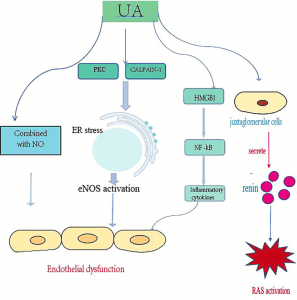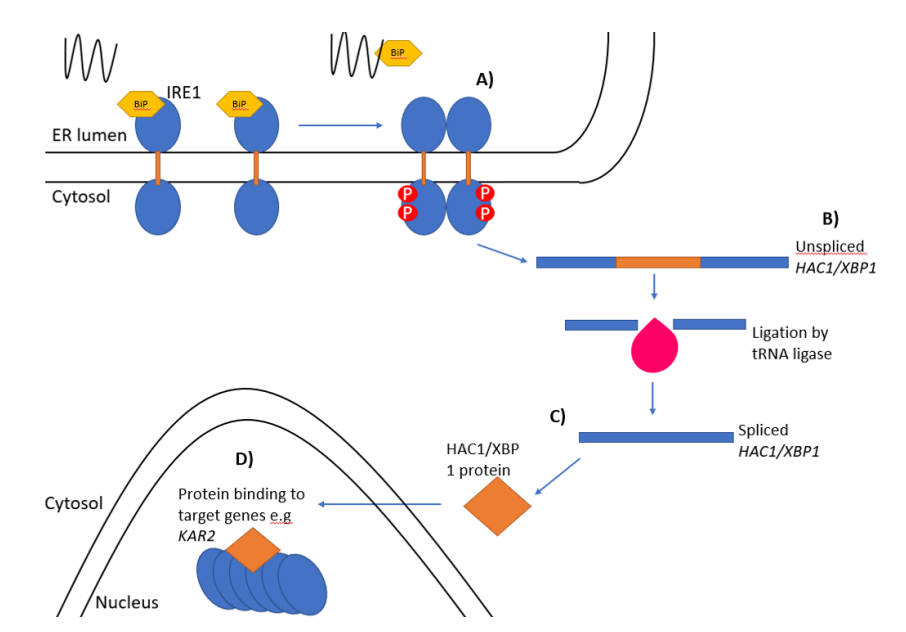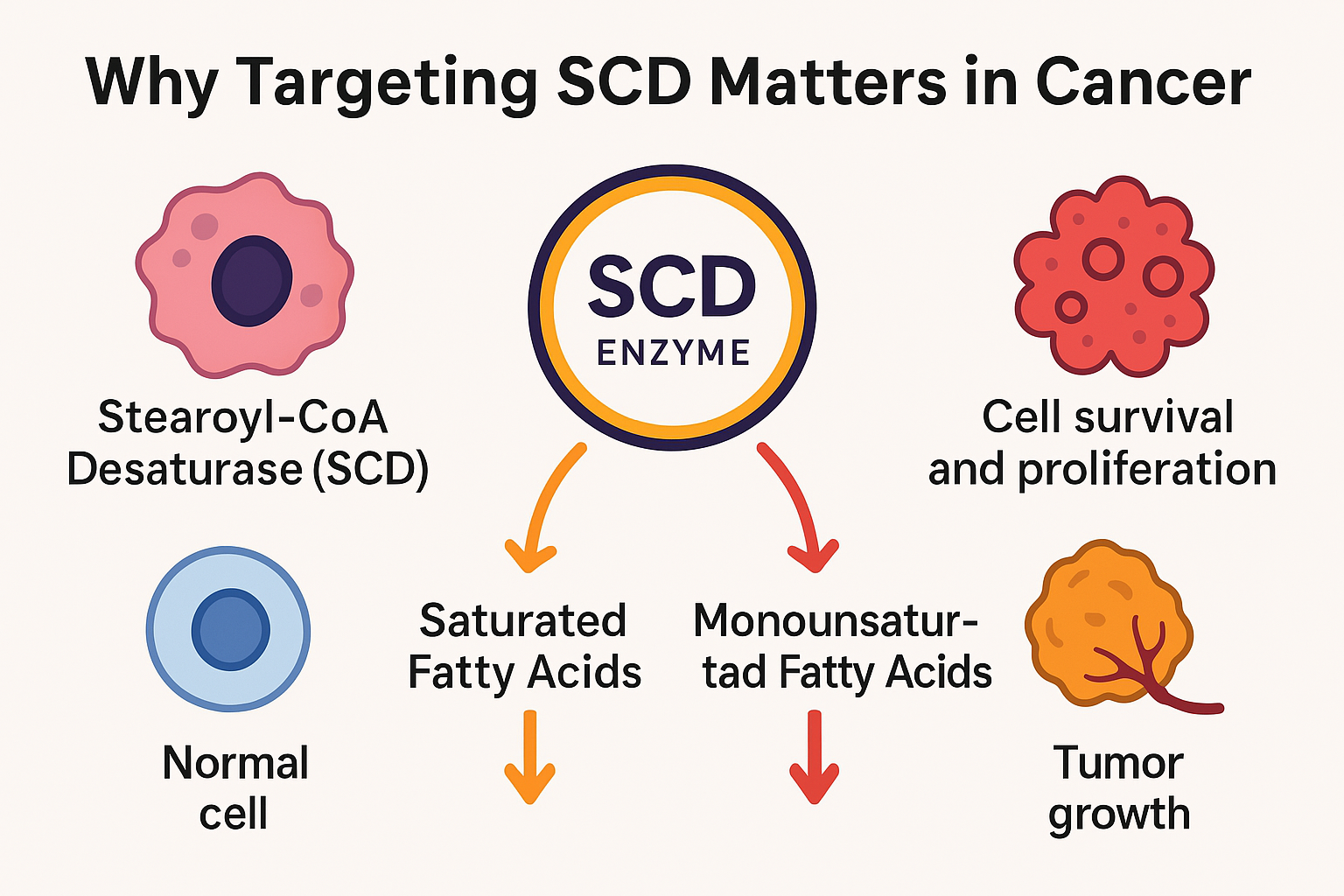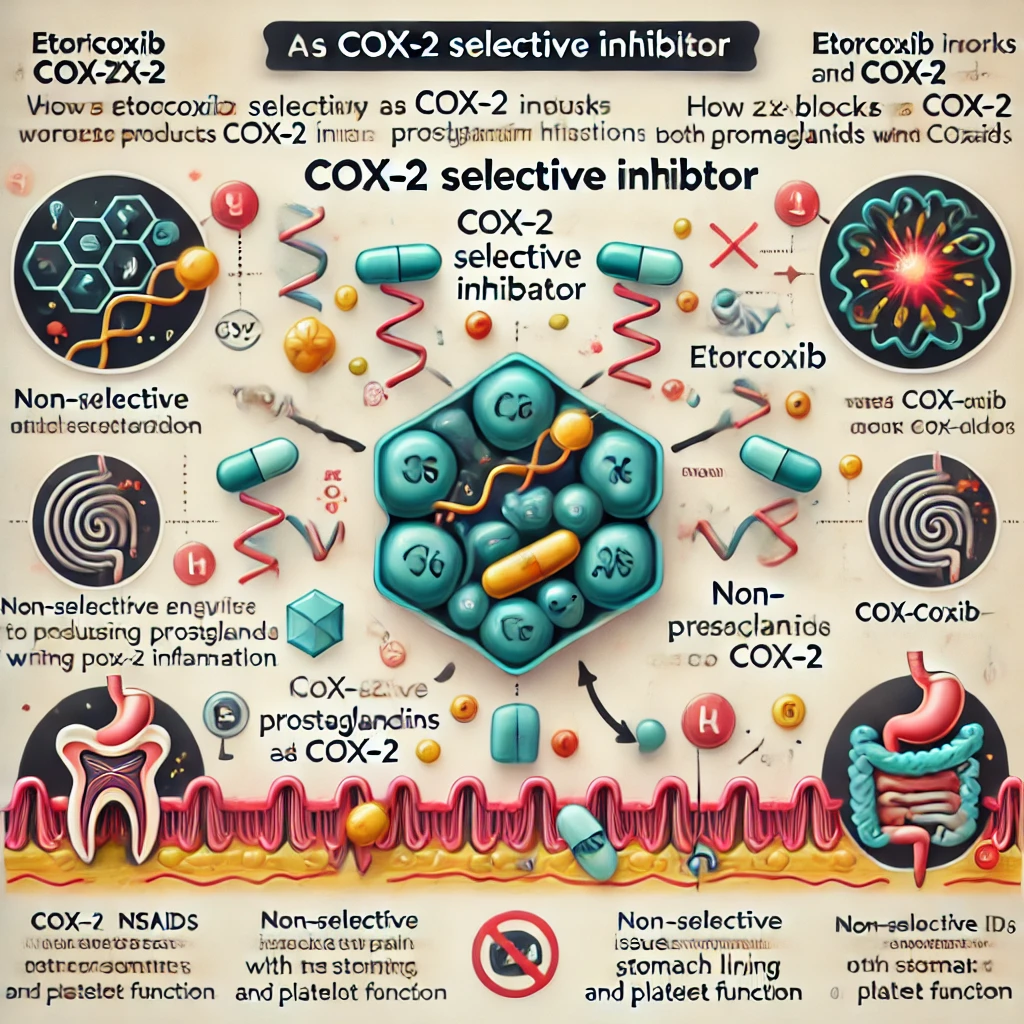Recent Progress on Uric Acid: A Review
Abstract
Uric acid is a chemical produced by the body when breaking down purines found in many foods. The kidneys usually filter it out and eliminate it in urine. But, an excess of uric acid can result in painful conditions like gout, kidney stones, and kidney disease. A healthy lifestyle and balanced diet can help control uric acid levels, mitigating the risk of associated health problems.
What is uric acid?
Uric acid is a naturally occurring chemical compound that is produced by the breakdown of purines, which are found in many foods and the body’s tissues.
In humans, uric acid is normally excreted by the kidneys, but when there is an excess production or impaired excretion of uric acid, it can accumulate in the body and lead to various medical conditions such as gout, kidney stones, and hyperuricemia.
Uric acid serves as a biomarker for gout and kidney disease. High levels of uric acid can signal kidney disease and trigger gout symptoms. Nevertheless, the exact mechanisms underlying these links remain unclear, and further investigation is required.
Chemical properties and synthesis of uric acid.
Uric acid is a heterocyclic organic compound that belongs to the family of purine derivatives. It has a molecular formula of C5H4N4O3 and a molecular weight of 168.11 g/mol. Uric acid is a weak acid with a pKa of 5.75 and is relatively insoluble in water. It is synthesized in the body through the breakdown of purines, which are nitrogen-containing compounds found in various foods. Uric acid can also be synthesized through laboratory methods, such as the oxidation of hypoxanthine or xanthine using various chemical agents. The synthesis of uric acid is an important area of research for the development of new therapies for conditions such as gout and hyperuricemia.

uric acid structure
The relationship between uric acid and diseases
Extensive research has been conducted on the relationship between uric acid and various diseases in recent years. High levels of uric acid in the blood, known as hyperuricemia, have been linked to a range of medical conditions. One of the most well-known associations is gout, a painful form of arthritis caused by the accumulation of uric acid crystals in the joints.
Hyperuricemia has also been associated with an increased risk of kidney disease, hypertension, and cardiovascular disease. Studies have suggested that elevated levels of uric acid may contribute to the development of these conditions through several mechanisms, including oxidative stress, inflammation, and endothelial dysfunction.
Uric acid levels are influenced by various factors, including genetics, diet, and certain medications. Management of hyperuricemia includes lifestyle changes, like dietary modifications and weight loss, as well as medications to lower uric acid levels. However, more research is needed to fully comprehend the intricate relationship between uric acid and diseases and to devise effective treatments for conditions related to hyperuricemia.
Production and metabolism of uric acid in the body
Uric acid is produced as a byproduct of the breakdown of purines, which are naturally occurring compounds found in many foods and the body’s tissues. Purines are metabolized into uric acid through a series of enzymatic reactions in the liver and other tissues. The final step in uric acid synthesis involves the enzyme xanthine oxidase, which converts xanthine to uric acid.
Once produced, uric acid is normally excreted from the body through the kidneys. However, when there is an excess production or impaired excretion of uric acid, it can accumulate in the blood and tissues and lead to various medical conditions such as gout, kidney stones, and hyperuricemia.
Various factors, such as dietary intake, genetics, and other medical conditions, can influence the metabolism of uric acid. Consuming foods high in purines or fructose can elevate uric acid production, while low-fat dairy products and plant-based foods may assist in reducing uric acid levels.

Figure 1[14] Uric acid promotes the development of CKD by damaging endothelial cells, activating the RAS, and promoting inflammatory responses. PKC, protein kinase C; ER, endoplasmic reticulum; NOS, endothelial nitric oxide synthase; HMGB1, high mobility group box chromosomal protein 1; NF-kB, nuclear factor kB; RAS, renin-angiotensin system.
Dietary factors that can affect uric acid levels
Dietary factors can have a significant impact on uric acid levels in the body. Certain foods, particularly those high in purines, can increase uric acid production and contribute to the development of hyperuricemia and related diseases such as gout. Examples of high-purine foods include red meat, organic meats, seafood, and some vegetables such as spinach and asparagus. On the other hand, low-fat dairy products and plant-based foods have been associated with lower uric acid levels. In addition, consumption of alcohol, particularly beer, and spirits, can also increase uric acid production and should be limited in individuals with hyperuricemia.
The role of uric acid in human health
Uric acid is vital for human health, acting as an antioxidant that helps protect against oxidative stress, which is implicated in several diseases. Furthermore, uric acid has a role in immune function, serving as a scavenger for specific bacteria and viruses while also exhibiting antimicrobial properties. It may also help regulate inflammation and the immune system.
However, excessive uric acid levels can lead to several medical conditions. Hyperuricemia, or elevated uric acid levels, is a major risk factor for gout, an arthritis type causing intense pain. Hyperuricemia has also been linked to an increased risk of kidney disease, hypertension, and cardiovascular disease.
The relationship between uric acid and human health is complex and not fully understood. While uric acid is necessary for certain physiological processes, excessive amounts can contribute to disease development. Therefore, it is important to monitor uric acid levels and manage hyperuricemia to prevent the development of related medical conditions.
In conclusion, uric acid plays a complex role in human health, with both beneficial and harmful effects depending on its levels in the body. A better understanding of the mechanisms underlying the relationship between uric acid and human health may lead to new treatments for related conditions.
Research on uric acid and its potential applications in medicine
Research on the potential applications of uric acid in medicine has been ongoing for many years, revealing both beneficial and harmful effects on human health. One area of application is in the treatment of gout, where uric acid-lowering drugs have been effective in reducing the frequency and severity of gout attacks.
Uric acid has also been studied for its potential neuroprotective effects, with clinical trials investigating its use in neurodegenerative diseases such as Parkinson’s and Alzheimer’s. Uric acid has also been identified as a biomarker for various medical conditions, including kidney disease, hypertension, and cardiovascular disease, and may hold potential as a prognostic indicator or therapeutic target in certain types of cancer. Continued research into uric acid may lead to the development of new treatments and diagnostic tools for a range of medical conditions.
Summary
Uric acid is a chemical compound that is produced when the body breaks down purines found in many foods. While high levels of uric acid can lead to painful conditions such as gout and kidney stones, uric acid also has some beneficial properties. For example, it is an endogenous antioxidant that can help to scavenge reactive oxygen species, including singlet oxygen, oxygen free radicals, and peroxynitrite. In addition, uric acid is sometimes used as an analytical reagent or in organic synthesis. Overall, while high levels of uric acid can be harmful, in moderation it can provide some benefits to the body.
References
- Becker, M. A., & Jolly, M. (2006). Hyperuricemia and associated diseases. Rheumatic Disease Clinics, 32(2), 275-293.
- Johnson, R. J., Lanaspa, M. A., & Gaucher, E. A. (2011, September). Uric acid: a danger signal from the RNA world that may have a role in the epidemic of obesity, metabolic syndrome, and cardiorenal disease: evolutionary considerations. In Seminars in nephrology(Vol. 31, No. 5, pp. 394-399). WB Saunders.
- Kang, D. H., & Chen, W. (2011, September). Uric acid and chronic kidney disease: a new understanding of an old problem. In Seminars in nephrology(Vol. 31, No. 5, pp. 447-452). WB Saunders.
- Ndrepepa, G. (2018). Uric acid and cardiovascular disease. Clinica chimica acta, 484, 150-163.
- Ryu, E. S., Kim, M. J., Shin, H. S., Jang, Y. H., Choi, H. S., Jo, I., … & Kang, D. H. (2013). The uric acid-induced phenotypic transition of renal tubular cells as a novel mechanism of chronic kidney disease. American Journal of Physiology-Renal Physiology, 304(5), F471-F480.
- Borghi, C., Agabiti-Rosei, E., Johnson, R. J., Kielstein, J. T., Lurbe, E., Mancia, G., … & Tsioufis, K. P. (2020). Hyperuricaemia and gout in cardiovascular, metabolic, and kidney disease. European journal of internal medicine, 80, 1-11.
- Tausche, A. K., Jansen, T. L., Schröder, H. E., Bornstein, S. R., Aringer, M., & Müller-Ladner, U. (2009). Gout—current diagnosis and treatment. Deutsches Ärzteblatt International, 106(34-35), 549.
- Hwu, C. M., & Lin, K. H. (2010). Uric acid and the development of hypertension. Medical Science Monitor: International Medical Journal of Experimental and Clinical Research, 16(10), RA224-30.
- Johnson, R. J., Nakagawa, T., Jalal, D., Sánchez-Lozada, L. G., Kang, D. H., & Ritz, E. (2013). Uric acid and chronic kidney disease: which is chasing which?. Nephrology Dialysis Transplantation, 28(9), 2221-2228.
- Kanbay, M., Segal, M., Afsar, B., Kang, D. H., Rodriguez-Iturbe, B., & Johnson, R. J. (2013). The role of uric acid in the pathogenesis of the human cardiovascular disease. Heart, 99(11), 759-766.
- Dehghan, A., Van Hoek, M., Sijbrands, E. J., Stijnen, T., Hofman, A., & Witteman, J. C. (2007). Risk of type 2 diabetes attributable to C-reactive protein and other risk factors. Diabetes care, 30(10), 2695-2699.
- Sánchez-Lozada, L. G., Lanaspa, M. A., Cristóbal-García, M., García-Arroyo, F., Soto, V., Cruz-Robles, D., … & Johnson, R. J. (2012). Uric acid-induced endothelial dysfunction is associated with mitochondrial alterations and decreased intracellular ATP concentrations. Nephron Experimental Nephrology, 121(3-4), e71-e78.
- Agarwal, V., Hans, N., & Messerli, F. H. (2013). Effect of allopurinol on blood pressure: a systematic review and meta‐analysis. The Journal of Clinical Hypertension, 15(6), 435-442.
- Mei, Y., Dong, B., Geng, Z., & Xu, L. (2022). Excess uric acid induces gouty nephropathy through crystal formation: a review of recent insights.Frontiers in Endocrinology, 13.




